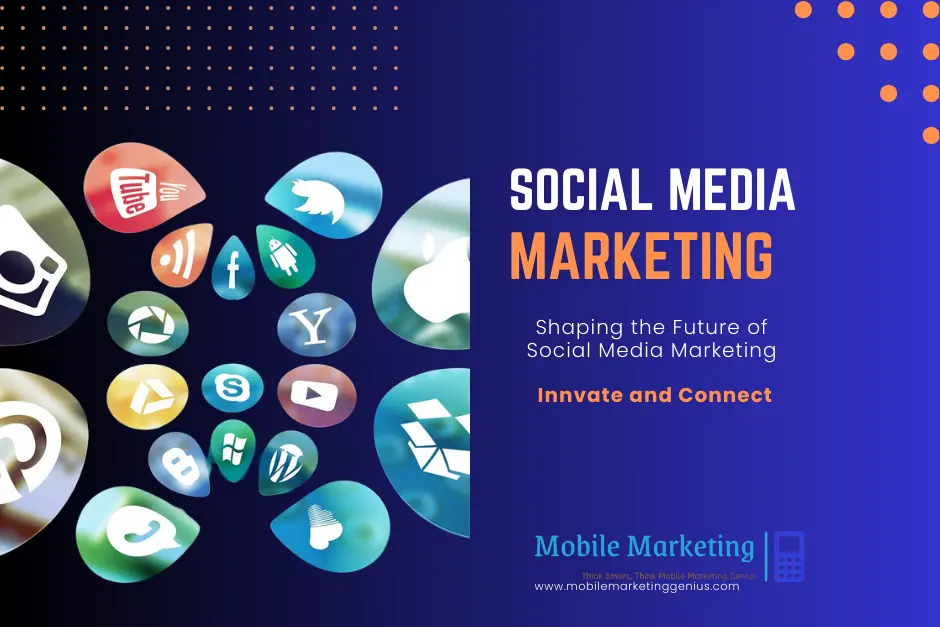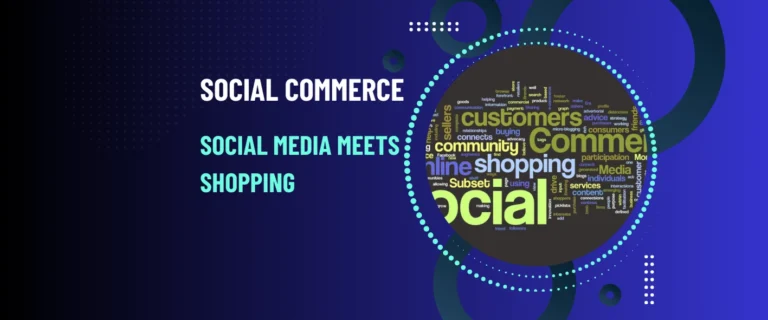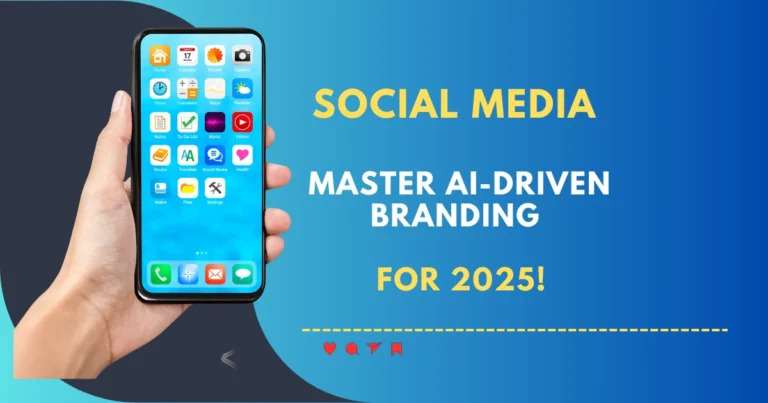The Future of Social Media Marketing: Trends, Challenges, and Opportunities

Social media has become an indispensable part of daily life, and its influence on businesses and consumers is only growing. The future of social media marketing is poised for revolutionary changes as platforms evolve to address new user behaviors, emerging technologies, and the demand for authenticity. From TikTok’s dominance to the rise of decentralized platforms and the integration of AI, this article explores how marketers can navigate the trends shaping the next generation of digital marketing.
Table of Contents
Comparison of Key Social Media Platforms
The future of social media marketing hinges on understanding the unique characteristics and opportunities presented by each platform. As user preferences and technologies evolve, platforms differentiate themselves by focusing on distinct strengths, targeting specific audiences, and offering tailored marketing tools.
1. TikTok: The Engagement Leader
- Strength: Short-form video content and trend-driven culture.
- Audience: Predominantly Gen Z and Millennials.
- Marketing Opportunities:
- Viral challenges and trends that drive massive organic reach.
- TikTok Shop and live-stream shopping for seamless e-commerce integration.
- Collaborations with influencers for authentic and relatable campaigns.
TikTok sets the benchmark for video marketing strategies, making it an essential platform for brands targeting younger audiences.
2. Bluesky: Decentralization and Privacy
- Strength: User control, data privacy, and a decentralized network.
- Audience: Privacy-conscious and tech-savvy individuals.
- Marketing Opportunities:
- Engaging with niche communities through value-driven campaigns.
- Exploring non-traditional advertising formats, such as sponsorships and partnerships.
- Building brand trust through authentic, community-focused initiatives.
Bluesky represents the emerging social media platforms reshaping marketing by prioritizing transparency and user ownership.
3. Instagram: Visual Storytelling and Shopping
- Strength: Visual-first content and integrated e-commerce tools.
- Audience: Millennials, Gen Z, and niche interest groups (e.g., fitness, fashion, food).
- Marketing Opportunities:
- Shoppable posts and Instagram Shopping to drive direct sales.
- Story ads and Reels for engaging short-form video content.
- Influencer collaborations for targeted campaigns.
Instagram’s versatility makes it a go-to platform for brands seeking to balance social commerce and storytelling.
4. YouTube: Long-Form Content and Tutorials
- Strength: Deep engagement through long-form video content.
- Audience: Diverse demographics, with a focus on education and entertainment.
- Marketing Opportunities:
- Tutorials and how-to videos for product education.
- Dedicated brand channels for long-term content strategies.
- Integration of YouTube Shorts for trend-based marketing.
YouTube remains a cornerstone of video marketing strategies, especially for in-depth storytelling.
5. Mastodon: Community-Driven Engagement
- Strength: Decentralized structure and strong community focus.
- Audience: Privacy advocates, open-source enthusiasts, and niche communities.
- Marketing Opportunities:
- Direct engagement with highly active and loyal users.
- Sponsoring community-driven projects to foster goodwill.
- Experimenting with authentic, user-focused content.
Mastodon’s appeal lies in its grassroots approach, offering unique opportunities for authentic marketing.
Key Takeaways
- Each platform offers distinct advantages that align with specific marketing goals.
- TikTok excels in engagement and e-commerce, while Bluesky and Mastodon cater to privacy-conscious users seeking authenticity.
- Instagram and YouTube balance visual content and social commerce, offering versatility for marketers.
Table 1: Comparison of Key Social Media Platforms
| Platform | Main Strength | Target Audience | Marketing Opportunities |
|---|---|---|---|
| TikTok | High engagement, short-form videos | Gen Z and Millennials | Influencer partnerships, live shopping, trend marketing |
| Bluesky | Decentralized, user-centric | Privacy-conscious users | Authentic storytelling, niche audience engagement |
| Visual content, shopping features | Millennials and Gen Z | Shoppable posts, influencer marketing | |
| YouTube | Long-form and video tutorials | All age groups | Video ads, product reviews, brand channels |
| Mastodon | Privacy and community-focused | Privacy advocates, tech-savvy | Community sponsorships, direct engagement |
By leveraging the strengths of these platforms, brands can craft tailored strategies to thrive in the future of social media marketing.
TikTok Engagement: Leading the Charge in Social Media Marketing
TikTok has emerged as a central player in shaping the future of social media marketing, setting benchmarks for engagement and creativity.
1. Unmatched User Engagement
TikTok boasts some of the highest engagement rates in the industry. Its algorithm prioritizes content based on user preferences, ensuring highly personalized and captivating experiences. For marketers, this translates to increased visibility and interaction, even for smaller brands.
2. The Role of Trends and Challenges
TikTok’s unique structure thrives on trends, hashtags, and challenges. These features encourage user participation and brand involvement:
- Hashtag Challenges: Brands create hashtags encouraging users to generate content, boosting organic reach.
- Viral Sounds and Audio: Using trending sounds amplifies discoverability and connects with current cultural moments.
3. E-Commerce Integration: The TikTok Shop
TikTok Shop blends video content with seamless shopping, allowing users to purchase products without leaving the app. This innovative approach combines entertainment and commerce, creating a new paradigm for social commerce.
4. Future Implications
As TikTok continues to dominate, marketers must:
- Stay attuned to evolving trends and create timely, relevant content.
- Invest in influencer partnerships to gain authenticity and reach.
- Develop live shopping events that engage users in real-time, enhancing brand loyalty.
By embracing TikTok engagement, brands can secure a competitive edge in the future of social media marketing.
Table 5: Key Metrics for Measuring TikTok Engagement
| Metric | What It Measures | Why It Matters |
|---|---|---|
| Video views | Number of times a video is watched | Indicates content reach |
| Engagement rate | Likes, comments, and shares per video | Reflects audience interaction and content relevance |
| Follower growth | Increase in followers over time | Shows brand popularity and audience loyalty |
| Hashtag performance | Engagement with branded hashtags | Measures success of trend-based campaigns |
Decentralized Platforms and Bluesky Social Media: A New Era
The future of social media is increasingly decentralized, with platforms like Bluesky social media leading the charge.
1. Why Decentralized Platforms Are Important
Decentralized platforms empower users by:
- Giving Control Back to Users: Bluesky allows users to own their data and customize their experience.
- Fostering Trust: Decentralized models address growing concerns about data privacy and unethical advertising.
2. Bluesky’s Impact on the Social Media Landscape
Bluesky’s rapid growth is a testament to its appeal among users seeking alternatives to centralized platforms. With over 20 million users, it offers a more community-driven and less ad-saturated experience, making it a fertile ground for innovative marketing.
3. Challenges for Marketers
- Limited Advertising Tools: Bluesky lacks the advanced ad targeting capabilities of platforms like Meta.
- Smaller User Base: While growing, decentralized platforms still have a niche audience.
4. Opportunities for Marketers
Marketers can:
- Build authentic, value-driven campaigns that resonate with users’ desire for transparency.
- Leverage influencers to engage with niche communities.
- Experiment with non-traditional advertising formats, such as community sponsorships.
As emerging social media platforms like Bluesky gain traction, marketers who adapt early will reap the benefits.
Table 4: Challenges and Opportunities in Decentralized Platforms
| Challenge | Description | Opportunity |
|---|---|---|
| Limited advertising tools | Lack of advanced targeting systems | Focus on organic growth and storytelling |
| Smaller audience bases | Niche users compared to traditional platforms | Deeper connections with highly engaged communities |
| Adaptation to new formats | Experimentation with unique platform-specific features | Innovative, creative campaigns that stand out |
Influencer Marketing Trends: From Mega to Micro
Influencer marketing remains a cornerstone of social media strategies, but the focus is shifting from mega-influencers to micro and nano-influencers, reflecting changing consumer preferences.
1. Why Micro and Nano-Influencers Are the Future
- Authenticity: Smaller influencers maintain closer relationships with their followers, making their endorsements more relatable.
- Higher Engagement Rates: Micro-influencers often achieve higher engagement than their mega counterparts.
2. AI in Influencer Marketing
AI is revolutionizing influencer marketing:
- Predictive Analytics: AI helps forecast campaign success by analyzing influencer performance metrics.
- Enhanced Targeting: AI tools identify influencers whose audiences align with a brand’s goals.
3. Future Trends
- Immersive Campaigns: Expect more AR and VR integrations as technology advances.
- Long-Term Partnerships: Brands are moving away from one-off collaborations to build ongoing relationships.
By aligning with these influencer marketing trends, brands can enhance authenticity and maintain relevance in the future of social media marketing.
Table 2: Emerging Trends in Influencer Marketing
| Trend | Description | Benefits for Marketers |
|---|---|---|
| Micro-influencers | Smaller influencers with high engagement rates | Authentic connections, better ROI |
| AI-driven influencer matching | Tools to identify influencers based on data analytics | Precision targeting, higher campaign success rates |
| Long-term partnerships | Building sustained collaborations | Stronger brand loyalty, consistent messaging |
| AR/VR influencer campaigns | Integrating immersive technologies in influencer marketing | Innovative user experiences, enhanced brand recall |
Video Marketing Strategies: The Future of Content
Video marketing continues to dominate the digital landscape and is set to define the future of social media marketing.
1. Why Video Content Thrives
Video is inherently engaging, offering a multisensory experience that holds attention better than static content. Platforms like TikTok, Instagram, and YouTube lead the charge in making video a staple for content consumption.
2. Emerging Video Trends
- Short-Form Videos: TikTok, Instagram Reels, and YouTube Shorts are reshaping how brands communicate.
- Interactive Videos: Features like polls, live Q&A, and gamification boost engagement.
- AR and VR Integration: Immersive videos are gaining traction, offering a new dimension to storytelling.
3. Best Practices for Video Marketing
- Keep videos concise and engaging.
- Use subtitles and captions to increase accessibility.
- Experiment with different formats to see what resonates with your audience.
Investing in video marketing strategies is no longer optional—it’s essential for success in the future of social media marketing.
Social Commerce: Redefining Shopping Experiences
Social commerce merges social media and e-commerce, transforming platforms into powerful shopping tools.
1. The Evolution of Social Commerce
Social commerce simplifies the buyer’s journey by enabling transactions directly on platforms. TikTok Shop, Instagram Shopping, and Pinterest Buyable Pins are leading examples.
2. Why It Matters
- Higher Conversion Rates: Social proof, such as reviews and influencer endorsements, drives purchases.
- Seamless Integration: Users can discover, engage with, and buy products without leaving the app.
3. Strategies for Success
- Create shoppable content that feels natural and aligns with your audience’s preferences.
- Use analytics to refine your social commerce strategy and improve ROI.
- Engage with audiences through live-stream shopping to create real-time connections.
Social commerce is not just a trend—it’s the future of digital retail and a critical aspect of the future of social media marketing.
AI in Marketing: Personalized and Predictive
AI plays a pivotal role in shaping the future of social media marketing, offering tools for hyper-personalization and predictive insights.
1. Applications of AI
- Personalization in Marketing: Tailoring content to user preferences improves engagement and loyalty.
- Predictive Analytics: AI forecasts user behavior, helping brands anticipate trends and customer needs.
2. Opportunities
AI will continue to drive innovation by enabling smarter targeting, automating content creation, and enhancing customer experiences through conversational AI and chatbots.
Table 3: Key AI Applications in Social Media Marketing
| AI Application | Use Case | Impact |
|---|---|---|
| Personalization in marketing | Tailoring ads/content to user preferences | Higher engagement, better customer experience |
| Predictive analytics | Forecasting trends and consumer behavior | Optimized campaigns, better targeting |
| Chatbots | Automated customer service and engagement | Improved response times, cost efficiency |
| Content creation tools | AI-generated text, video, or image content | Faster production, reduced manual effort |
Data Privacy in Social Media: Building Trust
Data privacy is a growing concern, and marketers must adapt to ensure user trust in the future of social media marketing.
1. Key Considerations
- Regulatory Compliance: Adhering to GDPR, CCPA, and other privacy laws is non-negotiable.
- Transparency: Brands must communicate data collection and usage policies clearly.
2. Best Practices
- Highlight your commitment to data security in campaigns.
- Build trust by aligning with platforms that prioritize user privacy, such as decentralized networks.
Emerging Social Media Platforms: The New Frontier
The future of social media marketing is being shaped by platforms like Bluesky and Mastodon, which prioritize transparency, privacy, and community. These emerging platforms offer a stark contrast to traditional, ad-driven models, creating opportunities for marketers to connect with audiences in authentic and innovative ways.
1. Why Emerging Platforms Matter
As users demand greater control over their data and more meaningful interactions, platforms like Bluesky and Mastodon cater to privacy-conscious, engaged audiences. For marketers, this shift presents a chance to align with user values and tap into niche, highly active communities.
2. Opportunities for Marketers
Be an Early Adopter
Early adoption offers a competitive edge:
- Brand Visibility: Stand out in a less crowded space.
- Strong Relationships: Engage with loyal, highly interactive early users.
- Innovation: Experiment with creative content strategies unique to these platforms.
Tailor Content to Platform Culture
Each platform has a distinct culture:
- Bluesky: Focus on trust-building and transparency through authentic campaigns.
- Mastodon: Engage niche communities with content that reflects shared interests.
Build Authentic Relationships
Engage users directly with interactive content, such as Q&A sessions, polls, and partnerships with influential community members.
Explore New Advertising Formats
Leverage sponsorships, community events, or collaborations with platform influencers to bypass traditional ad limitations and create organic connections.
Challenges to Navigate
While opportunities are plentiful, emerging platforms may have smaller user bases and lack traditional ad formats, requiring marketers to innovate and adapt.
By understanding these platforms’ unique dynamics, marketers can establish meaningful connections and gain a foothold in the evolving future of social media marketing.
Conclusion
The future of social media marketing presents immense opportunities for brands to innovate and connect meaningfully with their audiences. Platforms like TikTok continue to lead with unparalleled engagement, while decentralized networks such as Bluesky are reshaping how marketers build trust and interact with niche communities.
Key trends such as AI-driven personalization, social commerce, and authentic influencer marketing are redefining the digital marketing landscape. Brands that embrace these advancements will be better equipped to engage audiences, drive loyalty, and deliver tailored experiences.
To thrive, marketers must prioritize authenticity, trust, and agility. Transparent data practices and alignment with consumer values will remain non-negotiable as privacy and ethics take center stage.
By staying innovative and adapting to this dynamic environment, businesses can secure a competitive edge and play a role in shaping the future of social media as a vibrant space for connection, creativity, and commerce.





